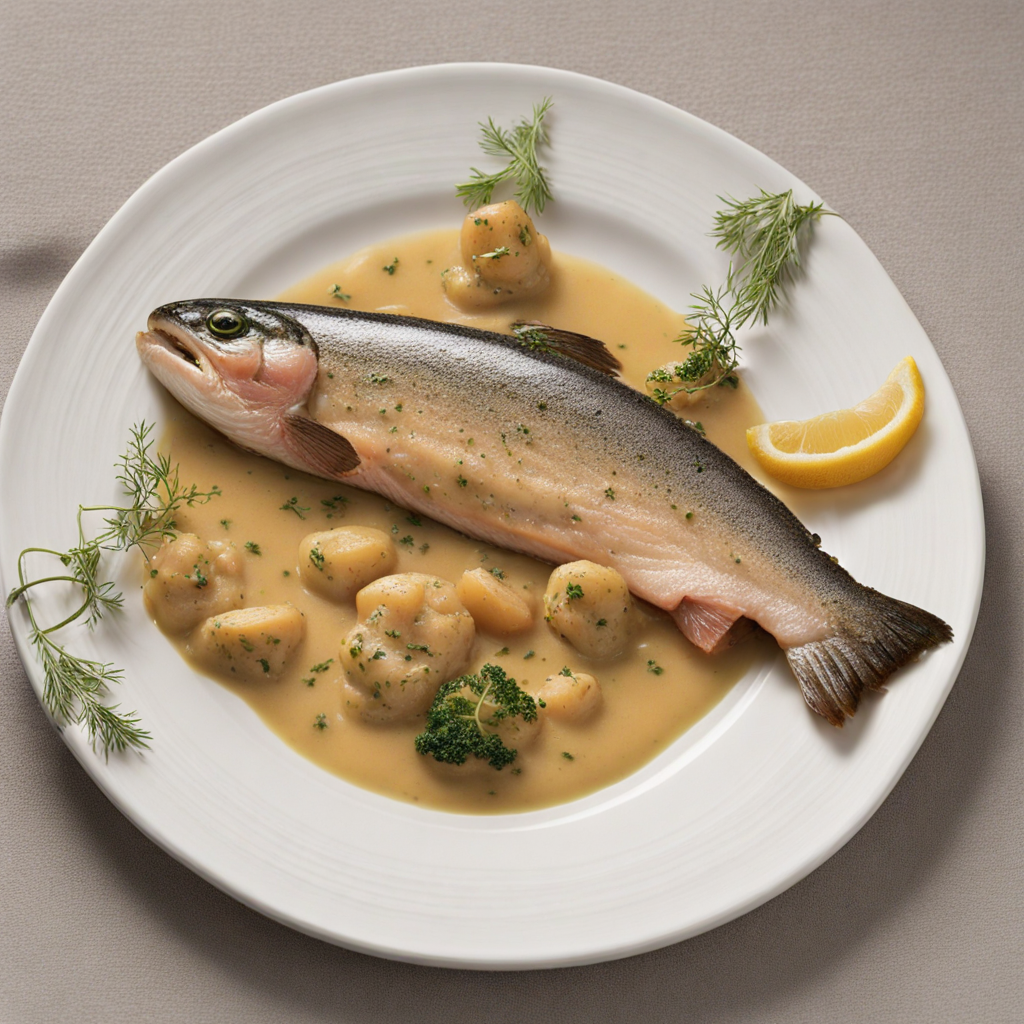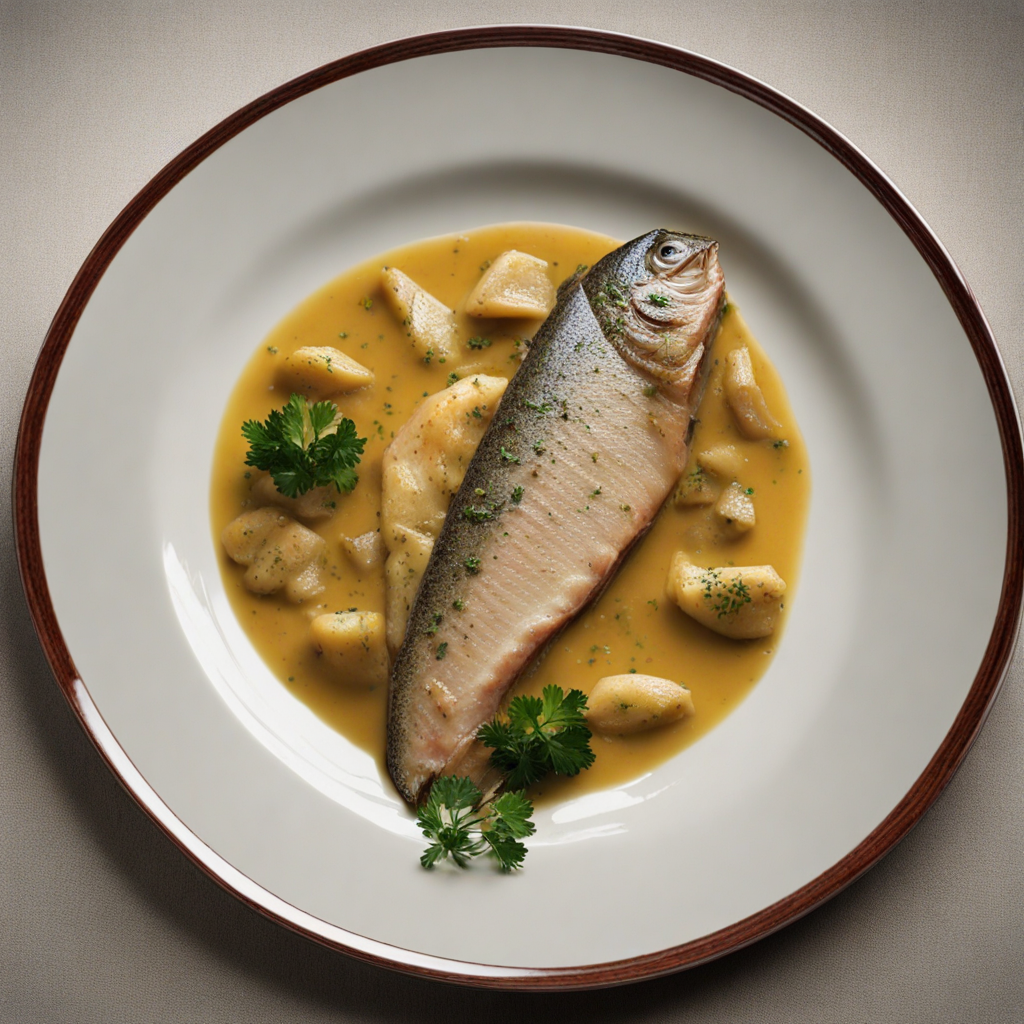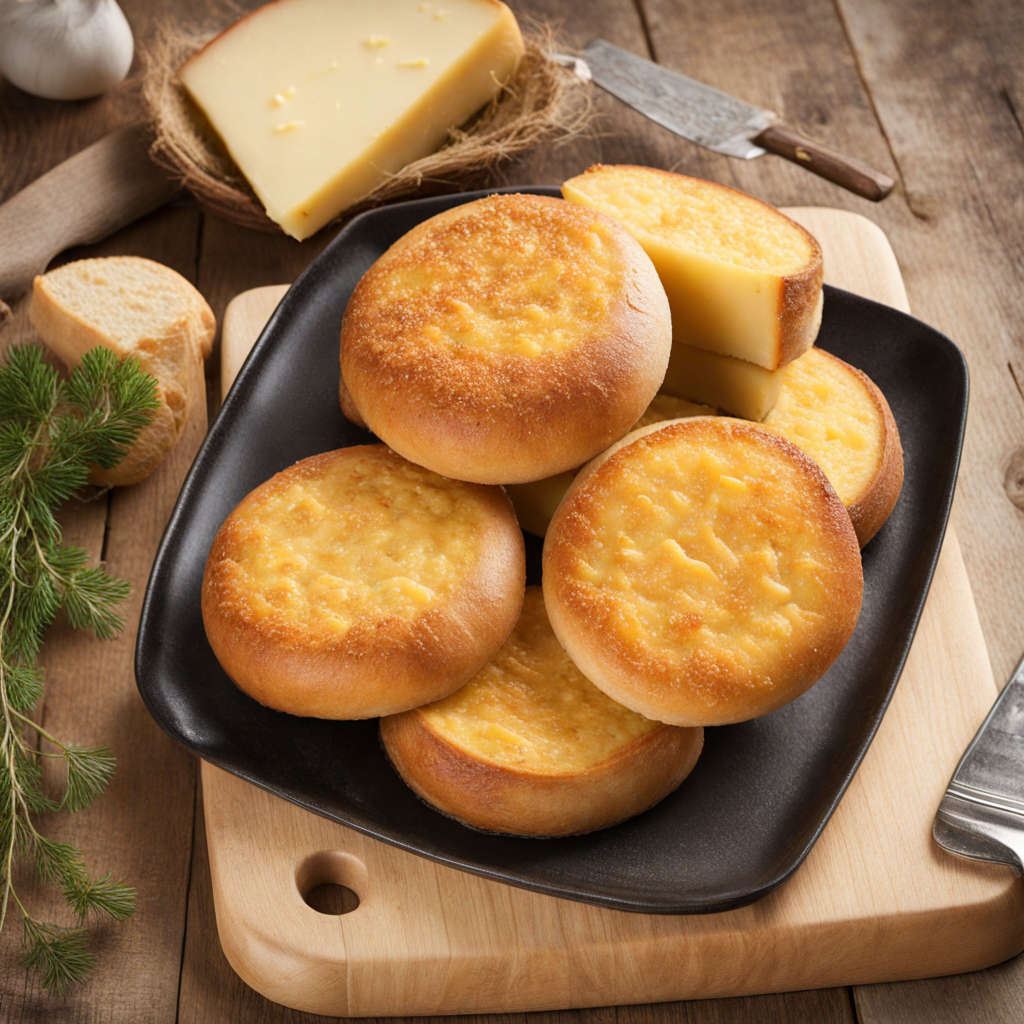F'rell am Rèisleck
F'rell am Rèisleck is a delightful dish hailing from the charming country of Luxembourg, showcasing the region’s love for fresh ingredients and traditional cooking methods. At its core, this dish features tender trout, typically caught from the clean, clear waters of the region. The fish is often prepared with a delicate touch, allowing the natural flavors to shine through, and is accompanied by a creamy white wine sauce that adds a touch of sophistication. This sauce, made with local white wine and often enriched with cream, elevates the dish, creating a velvety texture that perfectly complements the flaky trout. The accompanying component of F'rell am Rèisleck is the Reisleck itself, which refers to a bed of rice that is cooked to fluffy perfection. The rice absorbs the rich flavors of the sauce, making each bite a harmonious blend of textures and tastes. Often, seasonal vegetables are included, adding vibrant colors and a fresh crunch that rounds out the dish beautifully. This combination of flavors not only highlights the quality of the trout but also celebrates the agricultural bounty of Luxembourg, providing a well-balanced meal that is both satisfying and nourishing. F'rell am Rèisleck is typically served as a main course, often featured in local restaurants that pride themselves on traditional Luxembourgish cuisine. It’s a dish that invites diners to savor the simplicity and elegance of the ingredients, making it a must-try for anyone looking to expand their palate. Whether enjoyed during a festive gathering or a casual meal, this dish encapsulates the essence of Luxembourg's culinary heritage, offering a unique taste experience that transports you straight to the heart of the Grand Duchy.
How It Became This Dish
F'rell am Rèisleck: A Culinary Gem of Luxembourg F'rell am Rèisleck, or trout in Riesling, is a quintessential dish from Luxembourg that encapsulates the rich culinary heritage of the Grand Duchy. This delightful preparation of fresh trout, typically served with a creamy Riesling sauce, reflects not only the local gastronomy but also the historical and cultural influences that have shaped Luxembourg's identity over the centuries. #### Origins and Historical Context The roots of F'rell am Rèisleck can be traced back to the late medieval period when the cultivation of vineyards and the fishing of freshwater fish began to flourish in Luxembourg. The Grand Duchy is situated in the heart of Europe, bordered by Belgium, France, and Germany, which has led to a melting pot of culinary traditions. The use of Riesling, a white grape variety that thrives in Luxembourg’s Moselle Valley, is a testament to the country's vinicultural history. Riesling has been cultivated in the region since the 15th century, and over time, it became synonymous with Luxembourg’s wine culture. The Moselle River, which winds through the region, not only provides a rich habitat for fish but also serves as a vital artery for the local economy, connecting fishermen and vintners. As such, the combination of trout and Riesling in F'rell am Rèisleck reflects the symbiotic relationship between the land and its culinary practices. The dish is believed to have gained prominence in the 19th century, coinciding with the rise of Luxembourg's national identity. As the country emerged from the shadows of its larger neighbors, there was a renewed interest in celebrating local cuisine and traditional recipes. F'rell am Rèisleck became a staple in Luxembourgian households and restaurants, symbolizing national pride and regional authenticity. #### Cultural Significance F'rell am Rèisleck is more than just a dish; it is a cultural artifact that embodies the Luxembourgish way of life. The preparation of the trout is often a communal activity, with families and friends gathering to enjoy not only the meal but also the experience of cooking together. This communal aspect reinforces the importance of food in fostering relationships and maintaining cultural traditions. Moreover, the dish is frequently served during special occasions, such as family gatherings, Christmas, and national holidays. Its association with celebration and togetherness has elevated its status in the Luxembourgish culinary landscape. The use of Riesling in the sauce also underscores the importance of local wines, which are an integral part of Luxembourg’s cultural identity. Wine is not merely a beverage; it is a representation of the land and the people who cultivate it. #### The Dish: Ingredients and Preparation At its core, F'rell am Rèisleck consists of fresh trout, typically sourced from the clean rivers and streams of Luxembourg, and a sauce made with Riesling, cream, and aromatic herbs. The quality of the ingredients is paramount, as the dish highlights the natural flavors of both the fish and the wine. The preparation begins with cleaning and filleting the trout, which is then seasoned and pan-fried to achieve a golden crust. The sauce is created by deglazing the pan with Riesling, allowing the flavors to meld before adding cream and herbs like parsley and chives. The trout is then simmered gently in this luscious sauce, allowing it to absorb the aromatic notes of the Riesling. Serving F'rell am Rèisleck typically involves plating the trout alongside new potatoes or seasonal vegetables, creating a visually appealing and flavorful dish. The pairing of the dish with a chilled glass of Riesling enhances the dining experience, allowing diners to appreciate the harmony of flavors that Luxembourg’s terroir offers. #### Development Over Time As Luxembourg has evolved, so too has F'rell am Rèisleck. The dish has undergone various adaptations, influenced by changing culinary trends, globalization, and an increasing interest in gastronomy. Modern interpretations might include variations in the sauce, such as the addition of mustard or capers, to provide a contemporary twist on the classic recipe. In recent years, Luxembourg’s culinary scene has gained recognition, with chefs striving to honor traditional dishes while incorporating innovative techniques and global influences. This evolution reflects a broader trend in the gastronomy of many countries, where chefs are increasingly focused on local sourcing and sustainability. Luxembourg has also embraced the farm-to-table movement, which has heightened the appreciation for traditional dishes like F'rell am Rèisleck. Restaurants and home cooks alike are now more conscious of the origins of their ingredients, leading to a revival of interest in local fish and wines. This renewed focus on sustainability and local produce has helped to ensure that F'rell am Rèisleck remains a beloved part of Luxembourg's culinary heritage. #### Conclusion F'rell am Rèisleck is not just a dish; it is a celebration of Luxembourg’s rich history, culture, and community. Its origins in the country’s medieval agricultural practices, combined with the significance of local ingredients like trout and Riesling, reflect the deep connection between food and identity. As Luxembourg continues to navigate the complexities of modern culinary trends, F'rell am Rèisleck stands as a testament to the enduring value of tradition and the importance of honoring one’s roots. In every bite of this exquisite dish, one can taste the history, the land, and the collective memories of a nation that takes pride in its culinary heritage. Whether enjoyed in a cozy family kitchen or a Michelin-starred restaurant, F'rell am Rèisleck remains a cherished symbol of Luxembourg’s gastronomy, inviting all who partake to savor not just a meal, but a piece of Luxembourg itself.
You may like
Discover local flavors from Luxembourg







